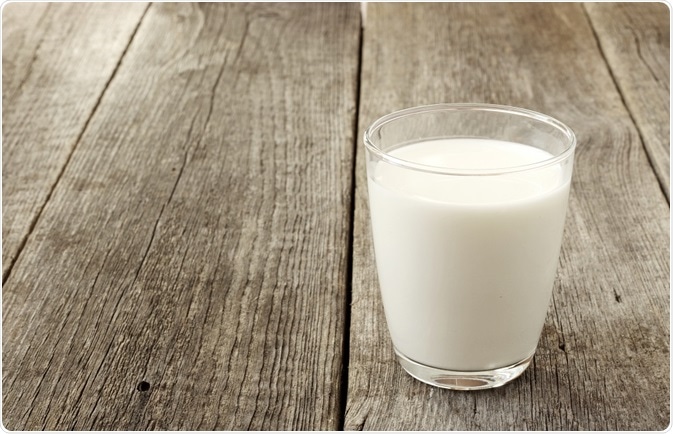Research estimates that cow’s milk allergies occur in about 7.5% of all infants, with 5% to 10% of affected infants showing adverse reactions to proteins in cow’s milk.

Credit: Lukasz Siekierski/Shutterstock.com
Diagnosing cow’s milk allergies and determining its typology is carried out by a physician. They consider the patient’s medical history and physical symptoms and sometimes order allergy tests (by a skin prick or blood tests). Following a diagnosis, the allergy must be managed by a diet that avoids all foods that may trigger a reaction.
Cow's milk allergies in infancy
Most patients with cow’s milk allergies are infants. Their bodies are unable to accept the protein content of the milk formula, and this triggers the release of histamines and other chemicals. Infants usually outgrow their milk allergies by the time they start school.
While cow’s milk allergies are more common among babies, the condition may also occur in adults. Lactose intolerance, another medical condition brought about by the body’s inability to process milk sugar normally, is more common among adults than cow’s milk allergy, however.
Managing a cow’s milk allergy
Management of cow’s milk allergy in infants should be done under the supervision of a healthcare provider. Managing such allergies would require parents or caregivers to avoid, or in most cases eliminate, foods containing specific milk protein products in the diet of their children. However, in infant allergy management, eliminating milk-based products is challenging because infants primarily rely on milk for sustenance and development.
The management of immediate allergic reactions to cow’s milk includes stopping the allergenic food and providing epinephrine injections, as required. Parents or caregivers should be strictly warned to remove all milk products (not just cow’s milk) from the child’s diet while simultaneously providing necessary medical attention to ease or prevent medical reactions.
Parents or caregivers have a heavy responsibility in ensuring that their children or wards are not exposed to allergy-inducing foods or liquids.
The following tips may be useful in the prevention of allergic reactions among susceptible infants:
- Always read ingredient labels before feeding the child
- Avoid feeding the infant with any type of dairy products, if possible
- In using ingredients or foods that could have undeclared cow’s milk products, always proceed with caution
- Consult with the doctor or a nutritionist for appropriate dietary plans and cow’s milk alternatives
- Regularly monitor the child’s physiological reactions to cow’s milk alternatives.
Foods to avoid
While infants primarily live on milk and milk products, parents and caregivers start them on semisolid food after a few months, and because cow’s milk allergies could continue even when the child is three years old, it is possible for the child to be exposed at this age through foods that may contain cow’s milk as an ingredient. Therefore, it is necessary to continue to be alert for cow’s milk allergy even at this age.
Parents or caregivers who have children suffering from cow’s milk allergy should avoid milk products or any product containing the following ingredients:
Direct milk sources:
- Butter
- Cheese
- Curds
- Custard
- Diacetyl
- Ghee
- Lactose
- Lactulose
- Pudding
- Rennet
- Whey
- Sour cream
- Yogurt
Other milk sources:
- Baked goods
- Chocolate and candies
- Margarine
- Nougat
- Processed food (may contain casein)
- Specialty products made with milk substitutes
- Nisin
- Some medications
- Lactic acid culture
- Shellfish
- Tuna fish
Further Reading
Last Updated: Oct 12, 2022